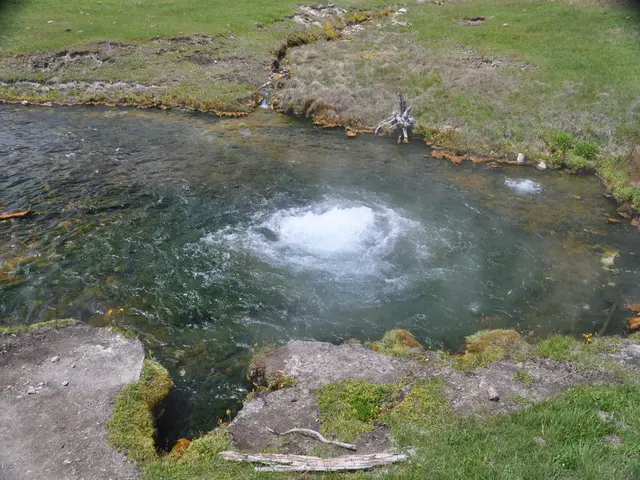England experiences drought expansion, as the Midlands join Yorkshire and the North-West, making a total of four affected regions.
England Faces Severe Drought: A Call for Conservation and Action
England is currently grappling with a severe drought, as June 2025 saw only 51.9 mm of rainfall, a staggering 80% less than the long-term average (LTA) for the month. This prolonged hot and dry weather has taken a toll on water resources, wildlife, and agriculture across the regions.
The drying natural environment has led to unfortunate incidents such as fish die-offs, blue-green algae blooms, and endangered bird breeding areas. Agricultural production has been significantly affected, with farmers experiencing yield penalties and livestock farmers worrying about a lack of feed.
The Met Office predicts that near-average rainfall in late July and early August 2025 may provide some respite from the drought. However, the situation remains critical, with reservoirs in Yorkshire, the East and West Midlands, and the North West running abnormally low. Reservoirs such as Blithfield and Derwent are at or below 60% storage.
Hosepipe bans have been implemented in the four regions of England, affecting nearly 8 million people. The water supply resources in these regions are under stress mainly due to increased demand from population growth, climate change impacts reducing water availability, and overextraction of groundwater exceeding natural replenishment rates.
In response to the crisis, the government and water authorities are taking immediate action. Building new reservoirs has not been done in over 30 years, but a 17% reduction in leaks is targeted over the next five years. United Utilities has increased its leak repair rate by 70%.
The National Drought Group, consisting of the Environment Agency, water companies, and other stakeholders, has been formed to coordinate response activities. This group meets regularly to discuss strategies such as encouraging water conservation among consumers and accelerating leak repairs.
Individuals can contribute to conservation efforts by running dishwashers and washing machines only when full, taking shorter showers, fixing plumbing leaks promptly, choosing water-efficient appliances, following regulations in impacted regions, using buckets instead of hoses when washing cars, and monitoring everyday water usage.
Infrastructure development, better water management, water conservation, and climate adaptation are long-term solutions to prevent future droughts. The Environment Agency is stepping up compliance checks on water abstractors and closely monitoring groundwater and river levels.
The drought in these regions is primarily caused by low rainfall and high temperatures. Long-term projections for the duration of the drought are less accurate, so ongoing observation is crucial for precise results. The government and water authorities urge public collaboration in alleviating the problem, recognising the importance of everyone's efforts in ensuring a sustainable water supply.
Read also:
- Peptide YY (PYY): Exploring its Role in Appetite Suppression, Intestinal Health, and Cognitive Links
- Toddler Health: Rotavirus Signs, Origins, and Potential Complications
- Digestive issues and heart discomfort: Root causes and associated health conditions
- House Infernos: Deadly Hazards Surpassing the Flames








